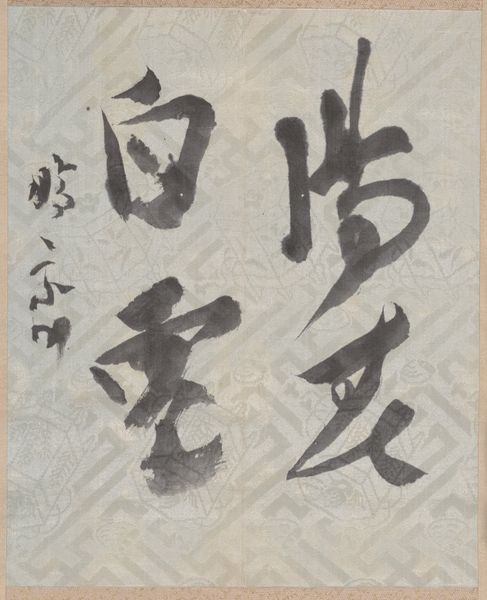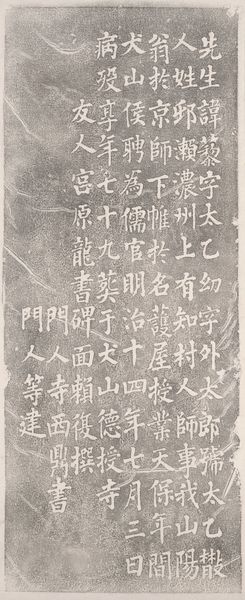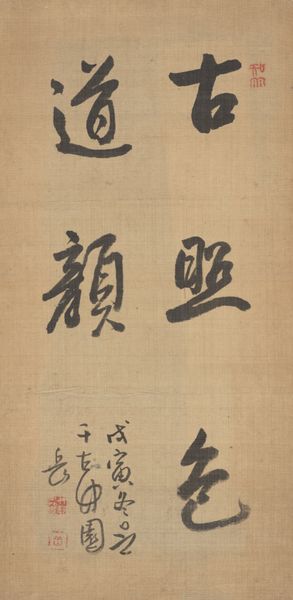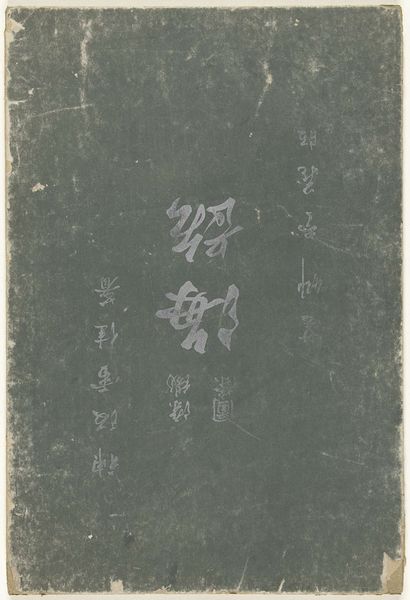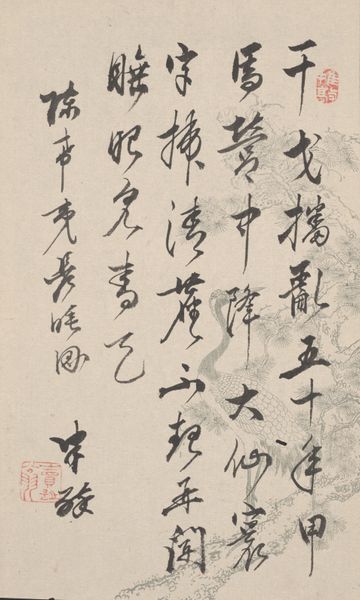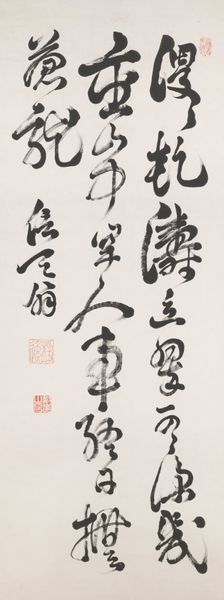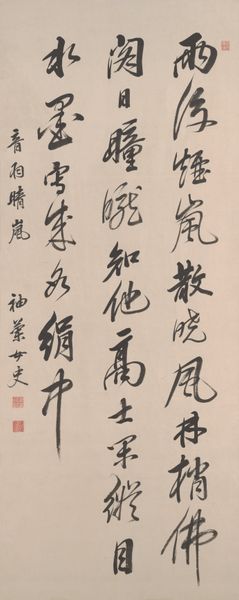
drawing, paper, ink-on-paper, ink
#
drawing
#
asian-art
#
paper
#
ink-on-paper
#
ink
#
geometric
#
line
#
calligraphy
Dimensions: 40 1/2 × 16 11/16 in. (102.87 × 42.39 cm) (image)69 3/8 × 20 1/4 in. (176.21 × 51.44 cm) (mount, without roller)
Copyright: Public Domain
Curator: Miyahara Setsuan's "Taiitsu's Grave Inscription," likely from the 19th century, greets us. It's crafted with ink on paper and now resides at the Minneapolis Institute of Art. What strikes you first about this work? Editor: A powerful somberness emanates from this piece, it’s immediately striking! The deliberate verticality and stark contrast create a monument-like presence even within this rectangular format. Curator: Precisely, the geometric frame immediately draws the eye inwards to consider the text's careful organization and linear progression. The visual relationship of the interior to the boundary makes this image interesting. Editor: The inscription itself— those bold, clear characters. Given the subject, “Grave Inscription,” each stroke resonates with profound significance, like chiseling memory into stone. One senses it's less about individual letters, but the symbolic weight they bear collectively. Curator: Indeed, the work operates formally as a collection of structured marks against a background that feels textural and almost hazy. It establishes both legibility and a sense of temporal distance simultaneously. Editor: Thinking about cultural context— calligraphy in the East is an art that elevates the word itself. There’s almost a reverential act to reading each line, feeling the weight of history and mourning within those strokes. Curator: One must consider the use of line here. It defines form while equally serving as a medium of emotional and philosophical intent, adding significantly to the image's complex visual structure. Editor: It makes you reflect on our mortality, and the importance of leaving our mark. These inscribed words memorialize a life and ensure continued recognition of a single human existence across time. It also points to this persistent human urge to connect through symbols and narrative. Curator: Concluding then, the piece exists as more than just script; it functions as an intersection between mark making, structure, and ultimately, a powerful commentary on legacy. Editor: And on remembrance— on the powerful capacity of art to immortalize, acting as an emblem connecting present viewers with echoes of the past.
Comments
No comments
Be the first to comment and join the conversation on the ultimate creative platform.
